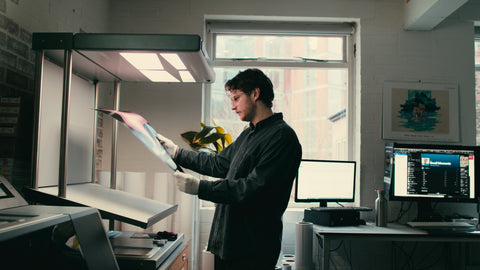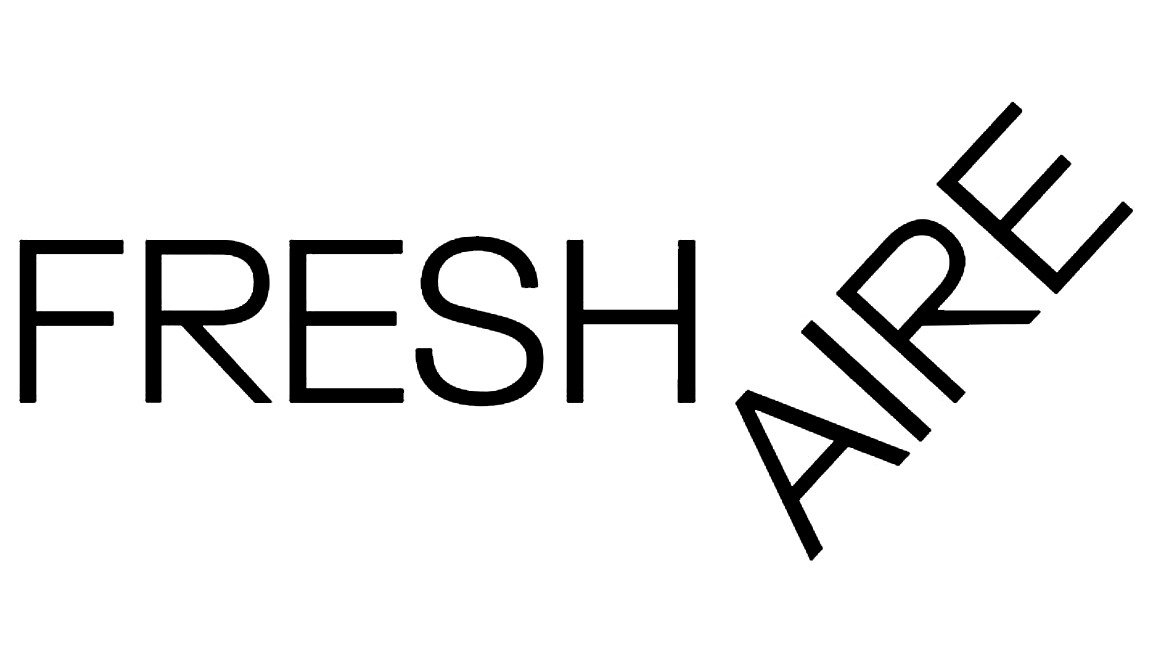

Frequently Ashed Questions
Giclée (pronounced "zhee-clay") is a high-quality inkjet printing process that uses a combination of archival paper, pigment-based inks and a high resolution printer to create vibrant and long-lasting prints, making them perfect for reproducing many kinds of artwork.
The inks used for Giclée prints are pigment-based rather than dye-based, meaning artwork is reproduced with a full spectrum of colour, as well as being resistant to fading with a predicted lifespan of over 100 years. The wide range of paper finishes available also mean an artist has more choice over how they wish to present their artwork.
The name 'Giclée' is a French term meaning 'to spray' which describes the printing process; large format inkjet printers use small spraying devices in the print heads that can match colour and precisely apply ink onto the paper. This is applied as many small individual-coloured dots which make up the image to produce highly detailed prints.
We ask that artists supply their digital files in the format of either JPG or flattened 8-bit TIF, sized to the required dimensions at 300dpi & tagged in an RGB colour space (e.g. Adobe 1998 RGB or Pro Photo RGB)
Uploading files that are a different aspect ratio to the selected print size can result in the artwork being cropped to fit on the print. To avoid this from happening, please ensure that your file is set up with the correct dimensions of your chosen print size.
To order prints, find our Giclée printing page on the menu and then a paper you wish to print with. On the order screen you can select your required print size and upload your print-ready artwork sized at 300dpi to our file uploader, or alternatively use our personal WeTransfer link referencing your order number.
You can then choose to have your print shipped or collected from our studio in Leeds; if you're shipping your print directly to a customer, simply enter their details into the shipping address and we will send your prints out without any branding or invoices.
If you are wanting to mount or frame your print, select the correct service in the menu where you can also select a paper type and upload your artwork file for printing.
We use a state of the art 12-colour Large Format Inkjet Printer called the Epson SC-P9500; it's capable of accurately reproducing a wide spectrum of colours with 99% Pantone Coverage on a range of fine art paper, making it perfect for printing a range of artwork.
We offer 8 Archival Museum-quality Hahnemühle Fine Art papers to choose from for your artwork, which offer a wide range of characteristics such as texture, tone & finish. The paper you choose can have a big impact on the visual experience of an artwork, so it's important you know the differences between them.
Each paper offers a unique combination of texture, base tone and finish that can influence the colour, sharpness, and tonal range of your artwork; the biggest differences can be found between printing with Matt (Uncoated) or Gloss (Coated) papers. Gloss papers are known for reproducing an increased colour saturation with denser black tones, suitable for high contrast and colourful artworks. Matt papers on the other hand offer a slightly muted look in comparison with a softer finish, achieving an enhanced rendering of detail and greater sense of depth with a tactile surface.
We offer Photography & Illustration Sample Packs of the papers so you can get to know them better in person. We also recommend trying a Test Strip before ordering a large print as this will give you a preview of how your artwork will look on any chosen paper.
To include a border on your print you must choose between 'Fit' or 'Fill' options. 'Fit' involves shrinking your image on the selected paper size to avoid cropping; this keeps the entire image visible but can result in borders being uneven if your image ratio doesn't match the selected print size.
'Fill' on the other hand fills the page with your image to create even borders, however can involve cropping your image to achieve this. To ensure you have full control over the outcome of your print, we recommend that you prepare your file to the exact dimensions and with your chosen borders beforehand and use this to order.
We aim to get your fulfil printing orders within 1-2 working days after
placing the order. If you require mounted or framed prints, we have a slightly
longer lead time of 3-5 working days, whilst for art scanning we ask for
between 5-7 working days.
For collection orders from our studio in Leeds, you're welcome to collect
your prints once you receive a notification from us to say they’re ready.
Orders for shipping will be dispatched in reinforced packaging and come with a tracking
number so you can follow its journey - we also have fast shipping options
available for when your prints need to get there quickly. Make sure you factor
in the lead time as well as shipping time when estimating it's arrival.
If you have noticed a fault with your print such as damage caused via
transit to the paper surface or edges, please get in touch so we can work
together to find a resolution. Please provide a photograph of the print and the
packaging it came in with the damage visible and send to us via email at
info@freshaire.co.uk. We will then work to establish the cause of the fault and
aim to send out a replacement for you the next working day.
If your print isn't damaged but you have a different issue, contact us and
we will investigate why your print didn't meet your expectations. To reduce
risk of dissatisfaction, we recommend trying a Test Strip before ordering your
final print to check you're happy with the brightness, colour balance and
sharpness of your artwork on any chosen paper.
To prepare your file for printing a test strip, first size it to the required dimensions at 300dpi and tagged in an RGB colour-space such as Adobe RGB 1998. Then use the rectangular marquee tool in Photoshop to copy a 20x5" section containing the full range of tonal values in your artwork.
Alpha Cellulose paper is produced from wood pulp; it is made up of multiple sugar molecules bonded together to form a chain. During the paper manufacturing process this chain is broken down, refined to remove undesirable elements (such as lignin) and then reformed to give strength to the finished sheet of paper. To create different finishes within the paper surface, occasionally Alpha Cellulose fibres are combined with other materials, such as cotton linters.
